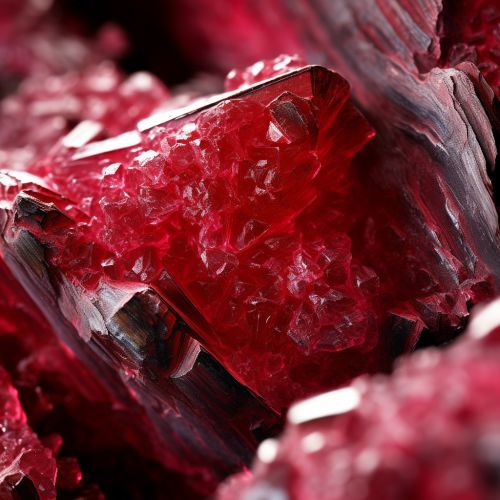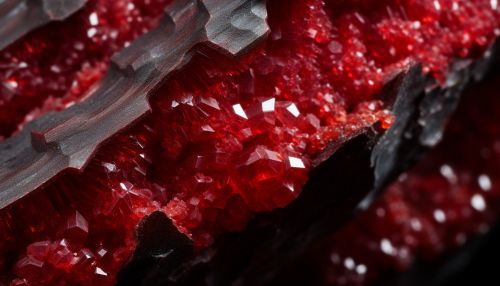Cinnabar
Overview
Cinnabar is a bright red mineral that is a primary source of mercury. It is also known as mercury sulfide (HgS), and is the most common source ore for refining elemental mercury. Cinnabar has been used for its color since antiquity in the Near East, including as a rouge-type cosmetic, in the New World since the Olmec culture, and in China since as early as the Yangshao culture, where it was used in coloring stoneware.


Physical Properties
Cinnabar is a hydrothermal mineral that precipitates from ascending hot waters and vapors as they move through fractured rocks. It occurs as coatings on rock surfaces and as granular to massive incrustations. It is generally found in a massive, granular or earthy form and is bright scarlet to brick-red in color. It resembles quartz in its symmetry and certain of its optical characteristics. Like quartz, it exhibits birefringence.
Occurrence and Mining
Cinnabar is found worldwide, but large quantities are mined in China, Spain, and the USA. The largest deposits are found in China, with production from the province of Hunan alone surpassing all other countries combined. In the USA, the most significant cinnabar deposits are located in California, Texas, and Nevada. Cinnabar is generally found in a massive, granular or earthy form and is bright scarlet to brick-red in color.
Mining of cinnabar is a hazardous process due to the toxicity of mercury. Miners are at risk of mercury poisoning, as are communities located near such mines due to contamination of water supplies.
Uses
Historically, cinnabar was used in Ancient Rome for decorative purposes and as a cosmetic. The Romans used it in wall paintings, as a pigment in art and cosmetics, and even in medicines. In China, it was also used for making lacquerware, which was exported to Europe during the 17th and 18th centuries.
Today, the primary use of cinnabar is as a source of mercury. Mercury is used in a variety of industrial applications, including the manufacture of batteries, fluorescent lights, and various types of scientific equipment. It is also used in traditional Chinese medicine, although this practice is controversial due to the health risks associated with mercury exposure.
Health Risks
Exposure to cinnabar can result in mercury poisoning, as mercury is released from the mineral through a process known as weathering. Symptoms of mercury poisoning can include tremors, insomnia, memory loss, neuromuscular effects, headaches, and cognitive and motor dysfunction. Chronic exposure can lead to serious health problems, including kidney failure and damage to the nervous system.
